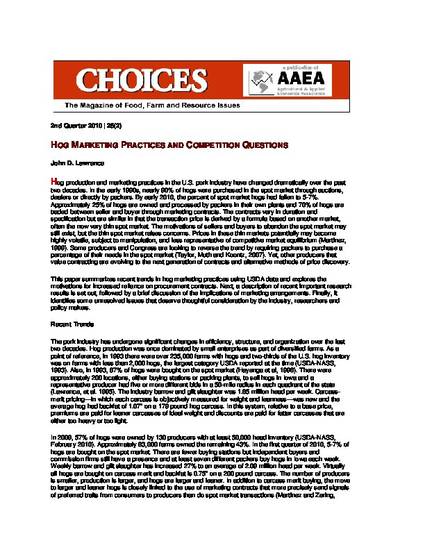
Hog production and marketing practices in the U.S. pork industry have changed dramatically over the past two decades. In the early 1990s, nearly 90% of hogs were purchased in the spot market through auctions, dealers or directly by packers. By early 2010, the percent of spot market hogs had fallen to 5-7%. Approximately 25% of hogs are owned and processed by packers in their own plants and 70% of hogs are traded between seller and buyer through marketing contracts. The contracts vary in duration and specification but are similar in that the transaction price is derived by a formula based on another market, often the now very thin spot market. The motivations of sellers and buyers to abandon the spot market may still exist, but the thin spot market raises concerns. Prices in these thin markets potentially may become highly volatile, subject to manipulation, and less representative of competitive market equilibrium (Martinez, 1999). Some producers and Congress are looking to reverse the trend by requiring packers to purchase a percentage of their needs in the spot market (Taylor, Muth and Koontz, 2007). Yet, other producers that value contracting are evolving to the next generation of contracts and alternative methods of price discovery
Available at: http://works.bepress.com/john-lawrence/73/

This is an article from Choices 25 (2010). Posted with permission.